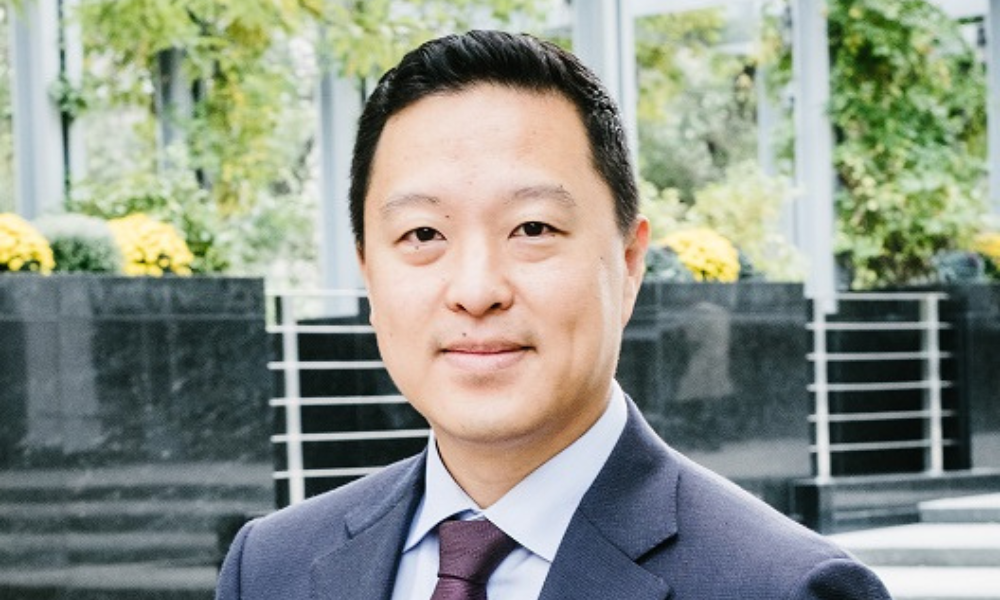Advisor explains how he brings doctors into his practice and turns them into clients by respecting their time and limiting his use of jargon

Gene Kim has built his practice around the Japanese concepts of Omotenashi (hospitality, authenticity, and respect), and Kodawari (persistence, perfection, and commitment). The Portfolio Manager, Private Wealth Manger with Summit Private Wealth / Mandeville Private Client Inc. strives to deliver a high level of personalized service in a mutually beneficial and mutually respectful way. It’s an approach that begins with active listening and ends in a high degree of client satisfaction. It’s an approach that works particularly well with one set of Kim’s clients: physicians.
Physicians, Kim explains, are often defined by tight time constraints and a high degree of stress related to their work. Time is in short supply for doctors and, after dedicating decades of their life to specialized study, they can lack some familiarity with more technical aspects of finance. Yet as high-income individuals with a high degree of financial complexity and planning needs, doctors are almost ideal clients for any financial advisor. Kim believes that through his pursuit of Omotenashi & Kodawari he has found two rules that advisors should follow with physicians: respect their time and limit jargon.
“When we say that ‘we have a pension style approach, we use a mix of public and non-public securities and we try to create a negatively correlated portfolio,’ that might sound to [advisors] like it’s regular language, but somebody else listening to it might not be sure of what we mean,” Kim says. “So we frame our discussion around an ‘all weather portfolio’ something that performs in all seasons. We don’t patronize our clients, but we use plain language.”
That jargon-free language creates, Kim says, an educational “safe space” for physician clients. As many physicians lack strong financial or business backgrounds, by acting as their translator Kim can earn their trust and respect. That initial trust is essential, too, because working with physicians means working on compressed time horizons.
Kim notes that many physicians have atypical hours or time demands that some advisors don’t anticipate. Advisors seeking to bring on more physician clients should understand the different time constraints of different specialities. A family physician might work 9-5, but an emergency room doctor certainly doesn’t. Grasping the hours demanded of even less-obvious specialities is crucial. Kim believes that this work of understanding has to begin at the start of any relationship with a potential physician client.
Even when a physician’s time is limited, their needs are not. While Kim sees a fair amount of overlap with what most clients need, he notes that doctors can have some additional complexity due to the fact that, in Canada, they often function as independent contractors. They may face tax considerations and business operating costs that they weren’t prepared for. They often begin practice with a high degree of debt, and retire without any kind of a pension. They can present a host of challenges for advisors.
Kim meets those challenges with a multi-family approach. His team brings in tax accountants, notaries, and lawyers to design incorporation and trust structures that physicians need. Kim recalls one client, a specialist in nuclear medicine, who needed a turnkey solution. Kim and his colleagues were able to help him incorporate, set up an effective trust structure for his estate and tax plans, and update legal documents to mitigate any of the risk built into his practice. Providing that turnkey solution, Kim says, allowed that client to better manage his time and limited his decision fatigue around the core strategies in his financial plan.
Building sophisticated plans is key to helping physicians eventually retire, too. Given they typically lack pensions and can’t sell their practices to retire on, retirement planning for doctors can be complex. Guiding his clients towards retirement Kim focuses on their priorities and the income and tax considerations that flow from those priorities. Kim tries to focus on more income streams that can function as capital gains and return of capital to help limit that tax exposure.
The other side of retirement is more of an emotional consideration. Given the demanding and often fulfilling nature of a doctor’s work, leaving it can be difficult. Kim has guided enough clients into retirement to know when someone might not set themselves up for strong mental health when they stop working. As part of his planning work, he helps his clients find out how they will retire in a healthy and fulfilling way, often with a community and social network to back them up.
As other advisors seek to capture more physicians in their practices, Kim believes that a solid understanding of their unique needs can ground an advisor in delivering the kind of service physicians require. Addressing non-financial needs such as mental health in retirement illuminates the level of commitment leading to client satisfaction garnering strong client advocacy.
“Doctors are different from other professionals with their own unique needs,” Kim says. “Frame their evolving goals offering holistic wealth and portfolio management, risk management of their business and family patrimony, providing service to second generation and helping them remain organized is critical to a successful relationship.”



